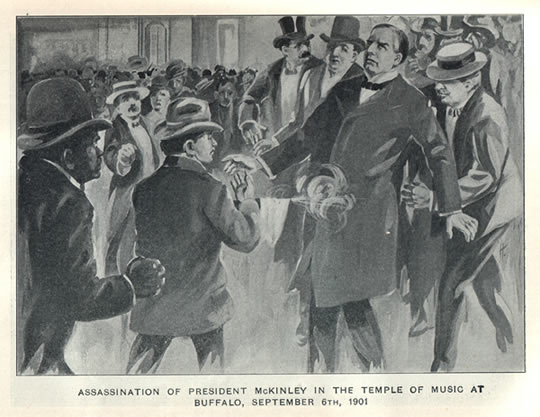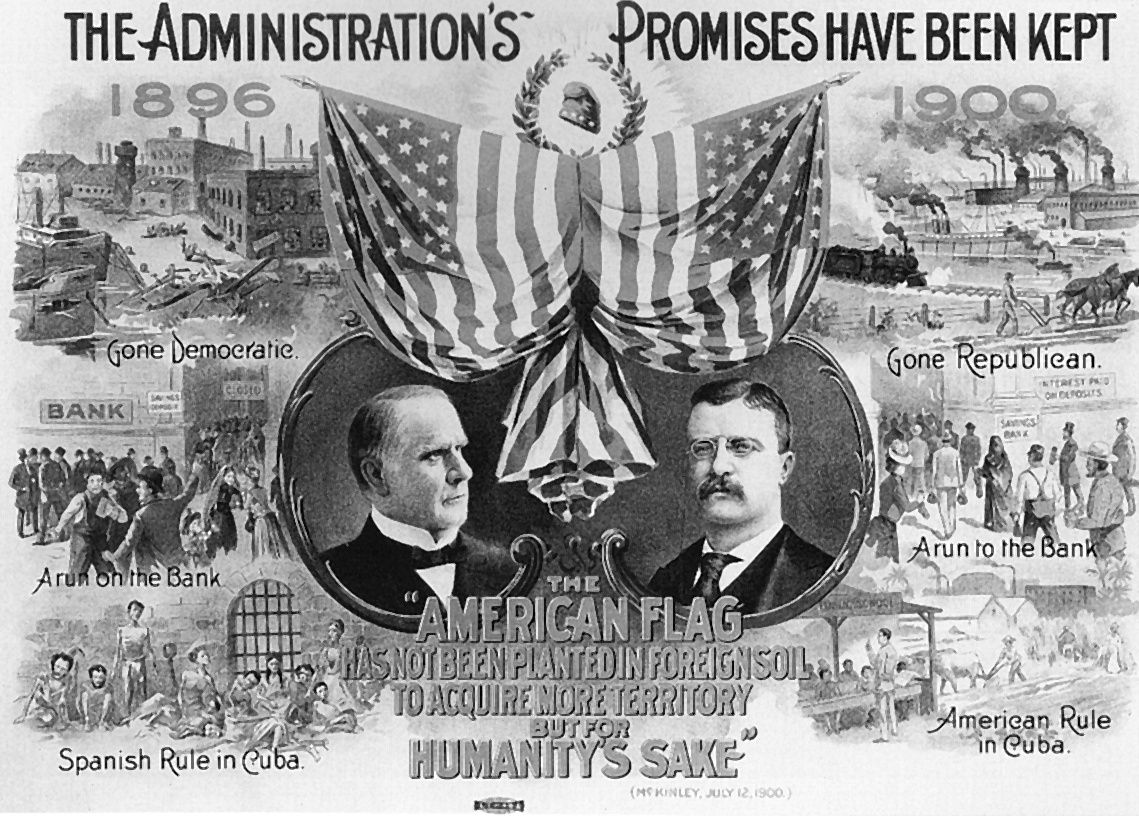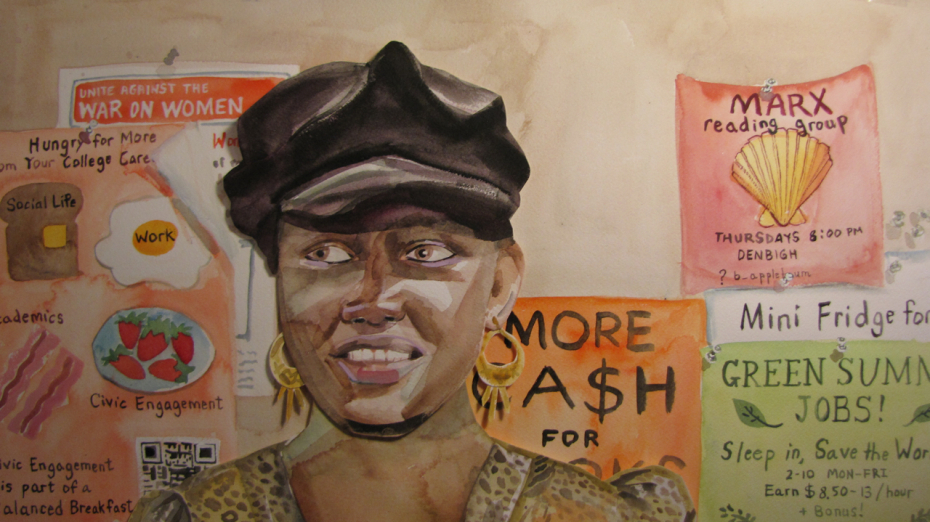(The Verge) – Amid a deepening Depression which struck in 1893 (following peculiar times in trading gold, foreign speculation and an increasing market), there seemed to be no rightful answer or leader who could steamroll America towards recovery, and hence, prosperity. However, that was only until a former Congressman and the Governor of Ohio emerged…
William McKinley, born in 1843, was an expert on protectionism and the idea of buffering the economy with high tariffs and a money supply based on “sound” currency. What that really meant, was gold. He strongly advocated the gold standard, as it was a reliable metal traded around the world. But at the time, this was a strongly debated issue.
After the burgeoning year of 1893, when J.P. Morgan singlehandedly saved Wall Street (in the absence of any central banking authority), a dichotomous split emerged: those who supported a bimetallic standard (silver) and those who sought refuge in the idea that gold was the cure-all (gold-standard). The presidency of Grover Cleveland was doomed, as Americans believed he followed the money-principles of Wall Street and the Gold Standard instead of listening to fellow Americans. These increasingly-large masses now sought the use of silver for currency, and the presence of a healthy inflation for debtors. But promising “prosperity,” the Republicans backed the popular Ohio governor, and McKinley sealed the nomination for President in 1896.
Infusing these ideas of the middle-class and less fortunate, a leader ‘for the people’ emerged after the Democratic National Convention in 1896. That man was William Jennings Bryan, and after a speech where he proclaimed that mankind will not be ‘crucified upon a cross of gold,’ he took the Democratic nomination and the support of the Populist Party, which prided itself on incorporating the likes of the farmers, unskilled workers, laborers, etc. into its platform instead of solely the ‘money men’ on Wall Street.

From his front porch in Ohio, McKinley campaigned for the presidency, time and again promising to bring America prosperity. When push came to shove, McKinley took all the populated (higher-income) areas while Bryan took the farmers and fairly more-average voters. Regardless, William McKinley was now the 25th President of the United States.
After Cleveland finished his term, McKinley invaded the White House, with his aim of prosperity right in-hand. Luckily, he would be able to say that under his watch, a fair-share of recovery did emerge during his term. Thanks to new technology in mining gold, plus a Republican stronghold that would stay in place until 1912, he was able to oversee a fairly-bright first term. In it, he promoted the 1897 Dingley Act protecting manufacturers, secured the passage of the 1900 Gold Standard Act and led America through a largely forgotten war, the Spanish-American War of 1898.
Failing to give up Cuba, the Spanish would anger the U.S. a fair share, and (helped by a little newspaper push from William Randolph Hearst), it ultimately took up arms against the European country. After a swift victory (where Teddy Roosevelt would glide to victory in the Battle of San Juan Hill with his Roughriders), the U.S. received Puerto Rico, Guam and the Philippines from the Spanish, while Cuba remained under US Army control. Under McKinley’s watch, the U.S. also annexed Hawaii and made it a territory of the union.
So when it came time to head to the ballot booths again, the same matchup was found; McKinley v. Bryan. Some of the same issues were brought up by Bryan, as he still urged for free silver, but he also accused the Republican of imperialistic agendas, hence why he had taken Guam, the Philippines and Puerto Rico from the Spanish. But yet again, William Jennings Bryan would lose, mostly because of the popularity and growth under the Ohioan (Bryan would go on to lose again in 1908, this time to Taft).
Poised for an intriguing second term, Americans were lining up in-mass to see the President, as they’d done on September 6, 1901…At the Pan-American Exposition in Buffalo, NY, McKinley was set to greet happily anxious Americans for a few minutes after a morning tour of Niagra Falls. Little did the guards protecting the President know that in-line to see the President was 28-year-old anarchist, Leon Czolgosz, who happened to be fixated on killing McKinley.
According to about.com, the doors opened at about 4:00 p.m. and individuals were able to approach the Commander-in-Chief, shake his hand and briefly greet him before being escorted out the door. At 4:07, Czolgosz entered the building, and holding a .32 caliber Iver-Johnson revolver wrapped under a handkerchief, neared the president. Reaching out with his left hand (thinking Czolgosz had an injury to his concealed right hand), the president went to greet the disturbed young man. He fired two shots into the sternum of the Commander-in-Chief.
In some sort of odd quandary, one of the bullets did not enter McKinley. It may have reflected off a button, but was lodged in his clothing. The other however, tore apart the innards ofNumber 25. The stomach, kidney and pancreas was all torn, and within moments he slumped over bleeding. According to about.com, he then spoke to the people around him, satirically saying, “Be careful how you tell my wife.”
As reality set in, guards and others in line then lunged at Czolgosz, beating him to oblivion before the victim chimed in. “Go easy on em, boys,” he is supposed to have said. But soon enough, the thought of medical help became glaring. With the arrival of an electric ambulance, medical workers gathered the president and took him to the hospital at the exposition.
Sadly, the only doctor on call was a gynecologist (as the surgeon was in another town), but jumping to action Dr. Matthew Mann tried hard to remove the bullet. The doctors searched frantically for the abdomen-lodged round, but in fear of producing more harm, they sewed up the president with their mission incomplete.

Over the next few days, McKinley shocked the country as it seemed he was recovering nicely. But as nearly any elementary-level student could tell you today, an infection was surely lingering. And that very plague hit the man, who slowly declined from the side effects of gangrene. On September 14, 1901 at 2:15 a.m., the President succumbed to his mortal wound and left behind a wife Ida, along with a country full of adoring citizens.
The nation was left leaderless until that afternoon, when the safari-loving, rugged, boisterous and adamant Vice President, Theodore Roosevelt took the oath of office.
William McKinley was a business-supporting, gold standard approving, tariff-minded figurehead, but his predecessor, “TR” or “Teddy,” as he’s widely known today, became a blight on the skin of the money-men, who loathed his trust-busting qualities and hatred of the “criminally rich.” Though much of his progressive qualities ring similar to big-government ideologies, while even breaking up a trust company JP Morgan formed in 1904, TR still maintained a love of country and would go on to leave a positive impression for decades to come. He is still noted as one of the best presidents of all-time. However, Mr. William McKinley may have been headed for a similar destiny, had a disgruntled anarchist not taken his life on a hot day in Buffalo, 1901.




